The tiny, Tudor-style Taipei Story House (台北故事館) is often described as resembling a dollhouse, making it an ideal venue to host an exhibition about dolls from the Japanese colonial era to the present day. Story of Dolls, which runs until Jan. 1, may suit school groups and young families well, but the exhibit is not just child’s play. It also seeks to explore the rapid socioeconomic and cultural changes in Taiwan over the last 100 years.
“During the 1960s and 1970s, Taiwan’s economic development began to take off,” says Monica Lee (李宇涵), the show’s curator. “You can observe it through the history of the doll-making industry.”
Each of the seven rooms in the former residence, which was built in 1914 and is a Taipei City heritage site, is dedicated to a theme. The front parlor is stuffed with teddy bears from around the world, while the two other downstairs rooms focus on Barbie dolls and delicate ceramic figures made in Gongguan Township (公館鄉), Miaoli County, during the 1970s and 1980s.
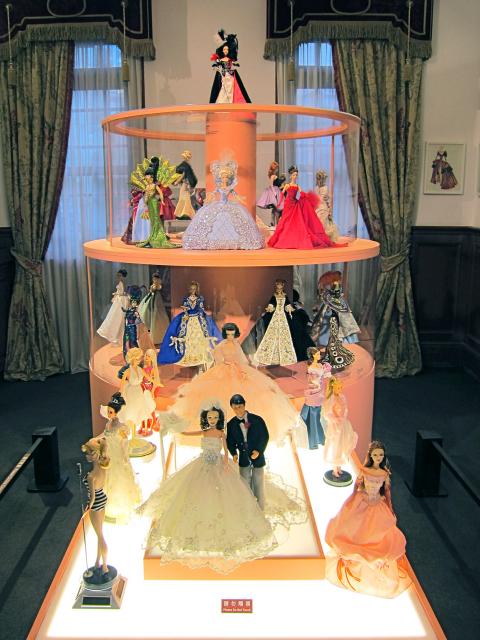
Photo: Catherine Shu, Taipei Times
Upstairs, three rooms showcase dolls that Taiwanese families of different economic backgrounds might have owned.
Dolls made for export were closely linked to the economic well-being of certain areas. In what is now New Taipei City’s Taishan District (泰山), for example, nearly a third of residents were employed by Mattel, which set up its flagship Barbie factory there in 1967. The area suffered when the company relocated its operations in 1987.
Still, Taiwan’s growing prosperity in the 1980s meant that more parents were able to purchase toys that had previously been manufactured solely for export. Lowered custom fees also allowed an increase in the import of Western toys, including Mickey Mouse stuffed animals.
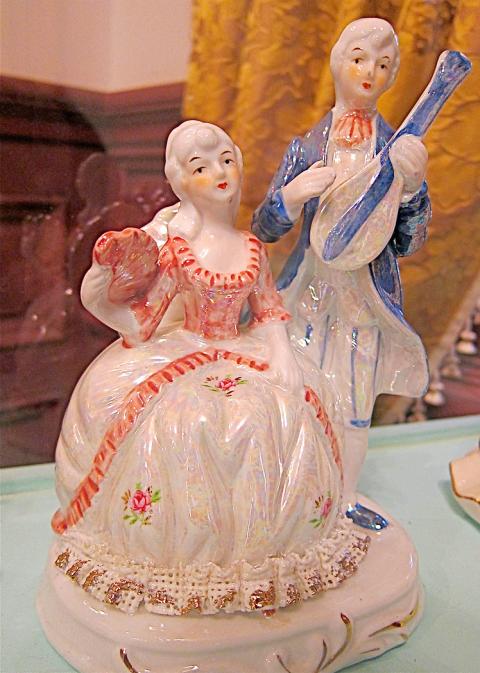
Photo: Catherine Shu, Taipei Times
“You can see by looking at the material and the quality of the dolls and the amount of accessories that they each came with, just how much spending money families began to have as the economy stabilized,” Lee says.
The teddy bear parlor was created with the help of the Taiwan Teddy Bear Association (台灣泰迪熊協會). One case includes iconic toys like Paddington Bear and a Steiff bear with its trademark metal button in one ear, while a giant Harrods doorman bear stands in one corner.
Lee says the teddy bear room was selected as the first room guests see because both girls and boys play with the stuffed toys. Barbie collector Yan Hung-cheng (顏弘政) says the dolls can also stir up memories for adults of both genders.
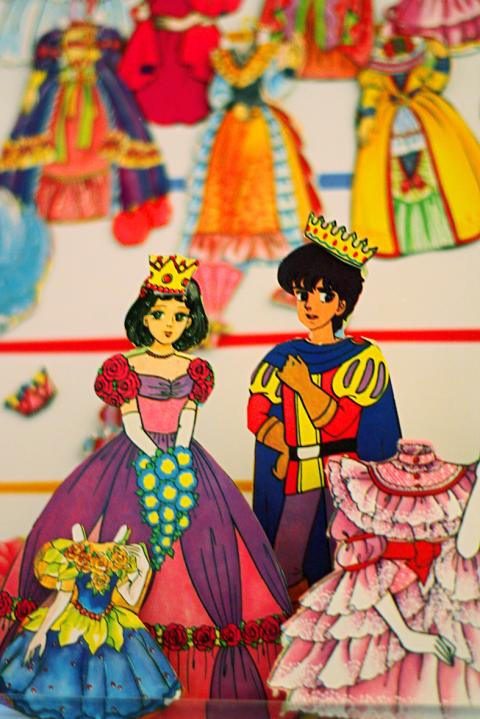
Photo: Catherine Shu, Taipei Times
The Miaoli-based restaurant owner, who started collecting Barbies a decade ago, loaned more than 40 limited edition dolls from his collection to Taipei Story House, where they are arranged like models walking in a fashion show.
All the dolls, including a wedding couple manufactured in Taishan, wear intricate, elaborate outfits — many hand-sewn with Swarovski crystals.
“I think that Barbies are the dolls that have made the deepest impression on both men and women,” says Yan, who displays his collection of more than 200 dolls at his Miaoli steakhouse, Tian Chu (天廚).
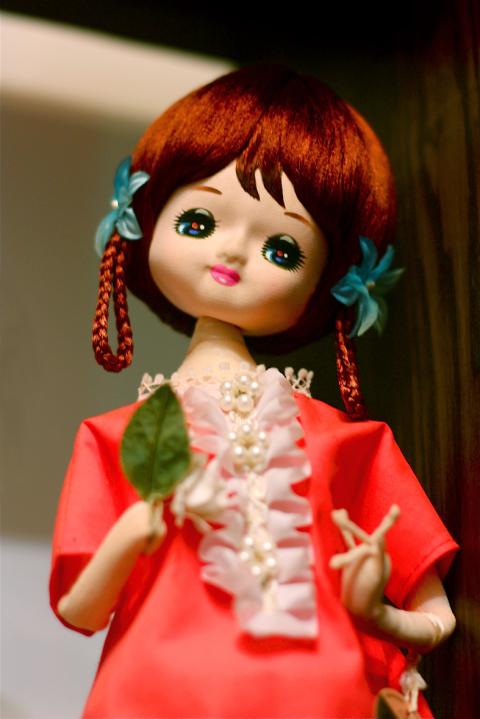
Photo: Catherine Shu, Taipei Times
Japanese-style dolls are displayed in a second-floor sitting room lined with tatami mats. Hand-painted porcelain dolls in traditional wedding outfits were presented as gifts and proudly displayed in the homes of prosperous families as decorative items, not toys. While most of these dolls were imported from Japan, a few were handmade in this country. Limbless kokeshi dolls carved from bamboo rods are displayed next to their wooden Japanese counterparts.
Cases in the hallway display dolls that were influenced by Western culture, including Kewpie dolls based on a character created in 1909 by American illustrator Rose O’Neill, as well as several handmade rag dolls.
“When we researched why most of the dolls Taiwanese children owned had [Caucasian] features, we found that it was partly because a lot of mothers and fathers had picked up their doll-making skills by doing piece work for Western companies,” Lee says.
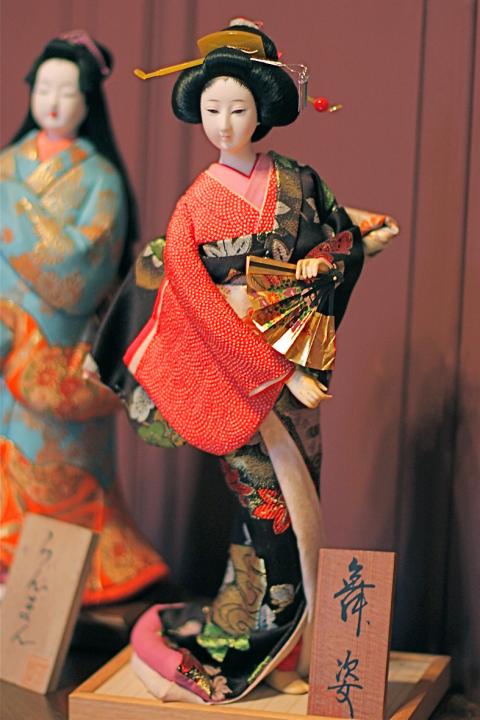
Photo: Catherine Shu, Taipei Times
Paper dolls popular during the 1970s and 1980s featured brightly colored, manga-like illustrations of girls with large, sparkly eyes and blond curls. The Taipei Story House has taken several of the dolls’ most iconic outfits and accessories, blown them up to human size and displayed them in a boutique-like setting. Visitors of all ages are encouraged to turn themselves into giant paper dolls by holding the outfits up to their bodies and checking out the effect in two full-length mirrors.
The final room in the exhibit, a cozy bedroom with a fireplace and an enamel bed frame, features an extravaganza of more than 150 plush toys and dolls representing popular comic and cartoon characters created over the last century. Mickey Mouse sits near a stuffed Pokemon and Totoro, while a giant Doraemon lords over Snoopy, Garfield, Hello Kitty, Popeye and Winnie the Pooh. Many items were borrowed from their original owners and still bear the marks of heavy play, including a Minnie Mouse with red marker scribbled on her left eye.
“Children go crazy when they see this room. It’s like a playground every day,” Lee says. “With all of our exhibits, we want people to relate them to their everyday lives and be able to say, ‘I remember that.’”
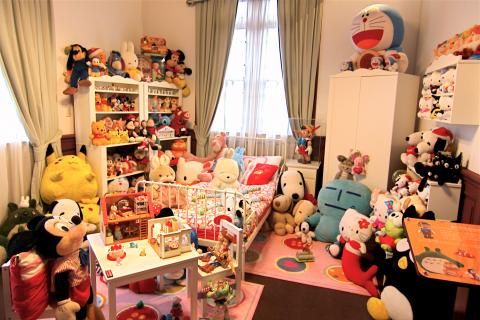
Photo: Catherine Shu, Taipei Times

Beijing’s ironic, abusive tantrums aimed at Japan since Japanese Prime Minister Sanae Takaichi publicly stated that a Taiwan contingency would be an existential crisis for Japan, have revealed for all the world to see that the People’s Republic of China (PRC) lusts after Okinawa. We all owe Takaichi a debt of thanks for getting the PRC to make that public. The PRC and its netizens, taking their cue from the Chinese Communist Party (CCP), are presenting Okinawa by mirroring the claims about Taiwan. Official PRC propaganda organs began to wax lyrical about Okinawa’s “unsettled status” beginning last month. A Global

Dec. 22 to Dec. 28 About 200 years ago, a Taoist statue drifted down the Guizikeng River (貴子坑) and was retrieved by a resident of the Indigenous settlement of Kipatauw. Decades later, in the late 1800s, it’s said that a descendant of the original caretaker suddenly entered into a trance and identified the statue as a Wangye (Royal Lord) deity surnamed Chi (池府王爺). Lord Chi is widely revered across Taiwan for his healing powers, and following this revelation, some members of the Pan (潘) family began worshipping the deity. The century that followed was marked by repeated forced displacement and marginalization of

Music played in a wedding hall in western Japan as Yurina Noguchi, wearing a white gown and tiara, dabbed away tears, taking in the words of her husband-to-be: an AI-generated persona gazing out from a smartphone screen. “At first, Klaus was just someone to talk with, but we gradually became closer,” said the 32-year-old call center operator, referring to the artificial intelligence persona. “I started to have feelings for Klaus. We started dating and after a while he proposed to me. I accepted, and now we’re a couple.” Many in Japan, the birthplace of anime, have shown extreme devotion to fictional characters and
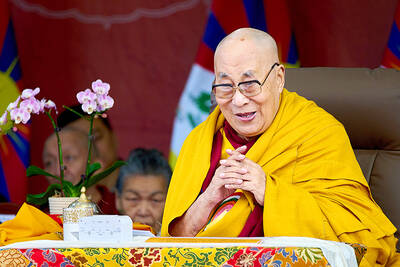
Youngdoung Tenzin is living history of modern Tibet. The Chinese government on Dec. 22 last year sanctioned him along with 19 other Canadians who were associated with the Canada Tibet Committee and the Uighur Rights Advocacy Project. A former political chair of the Canadian Tibetan Association of Ontario and community outreach manager for the Canada Tibet Committee, he is now a lecturer and researcher in Environmental Chemistry at the University of Toronto. “I was born into a nomadic Tibetan family in Tibet,” he says. “I came to India in 1999, when I was 11. I even met [His Holiness] the 14th the Dalai